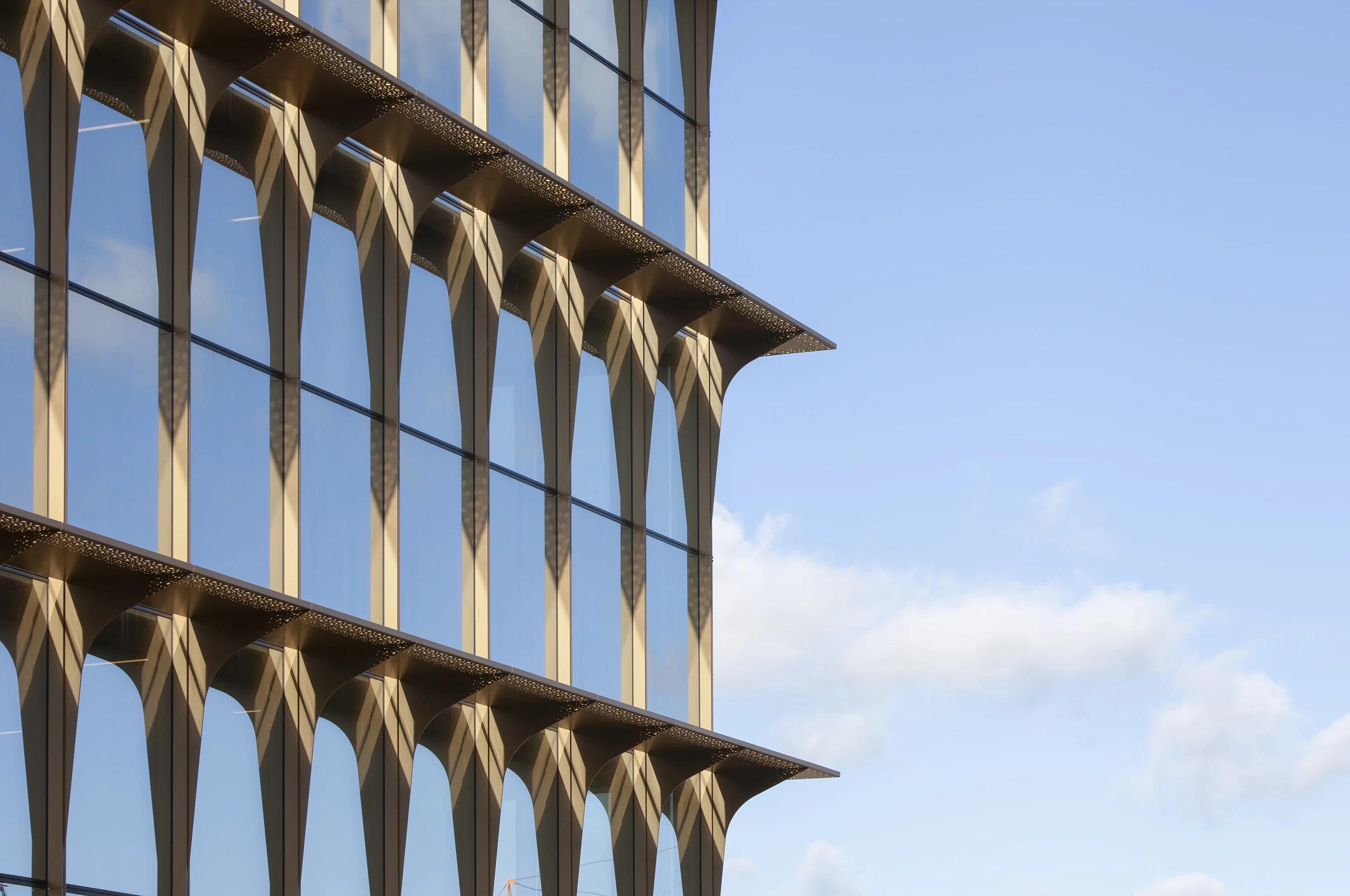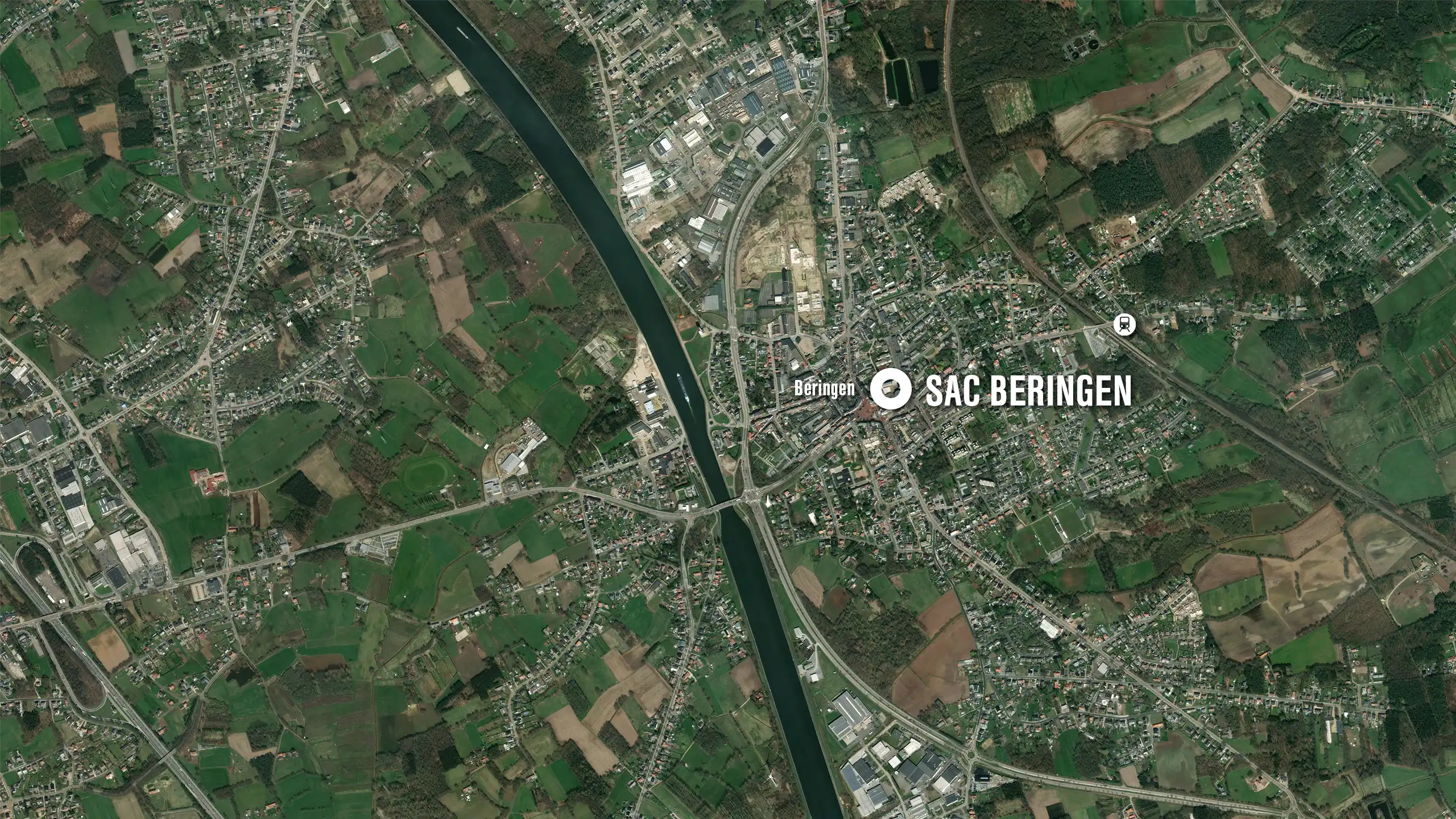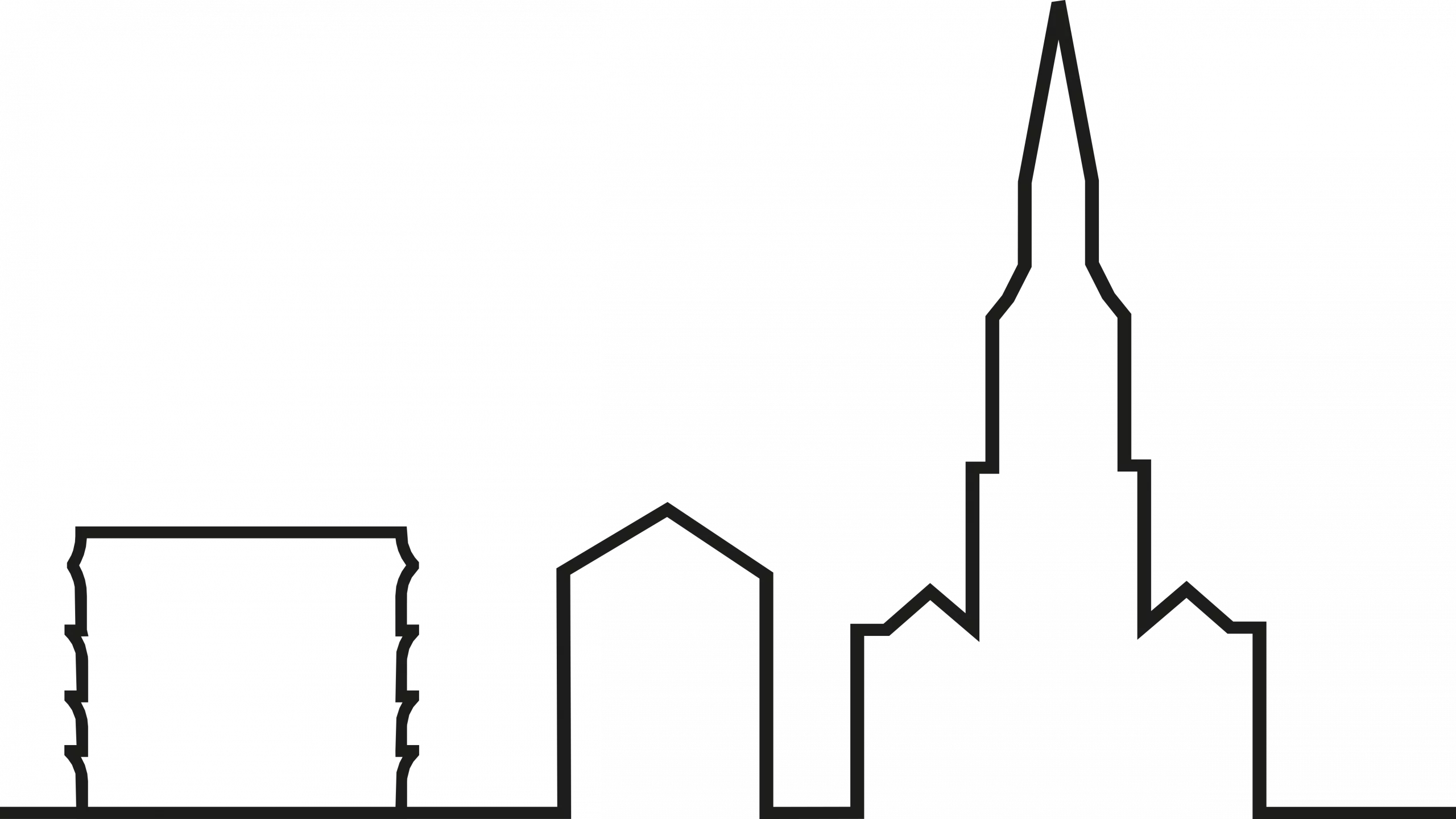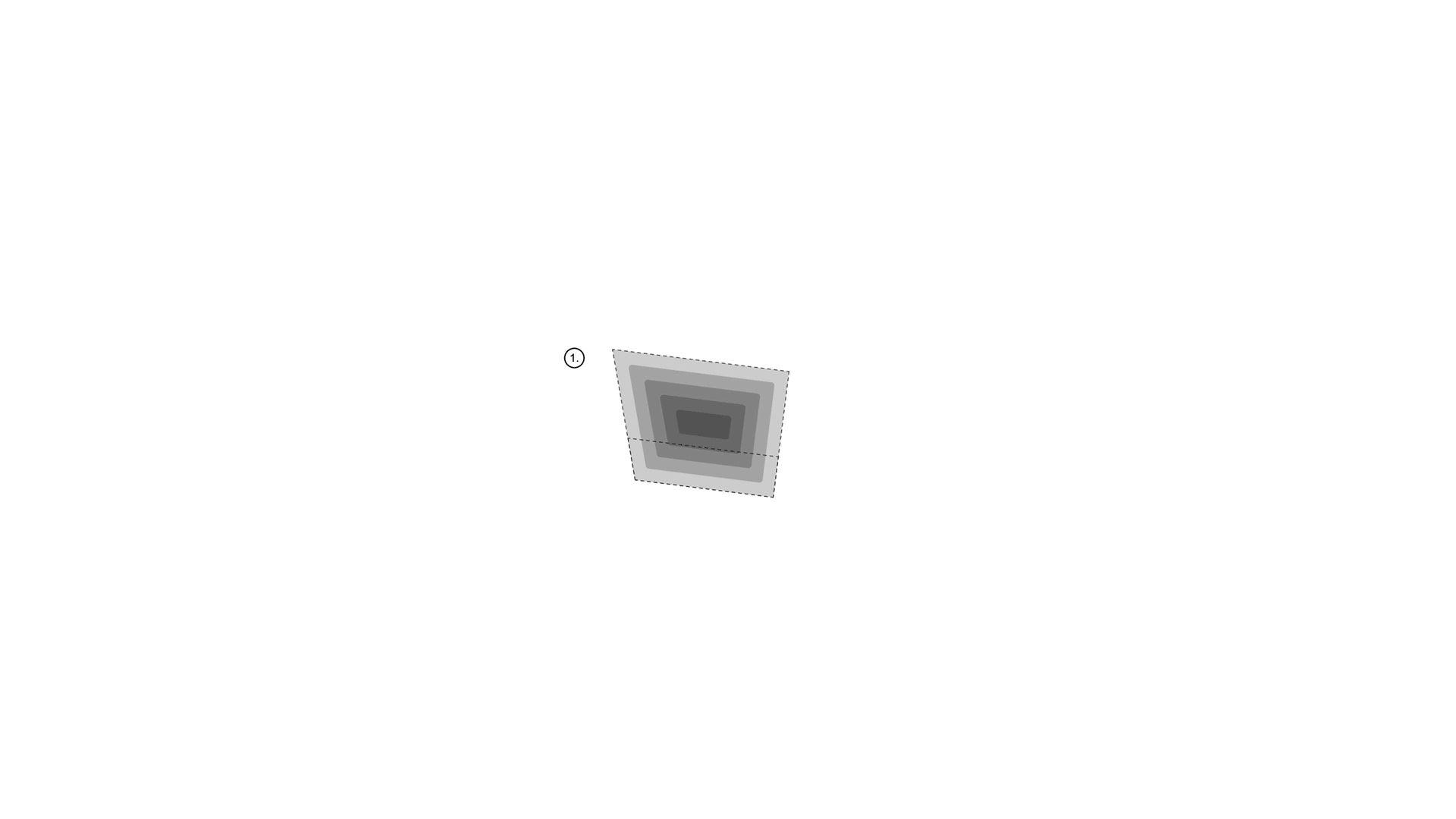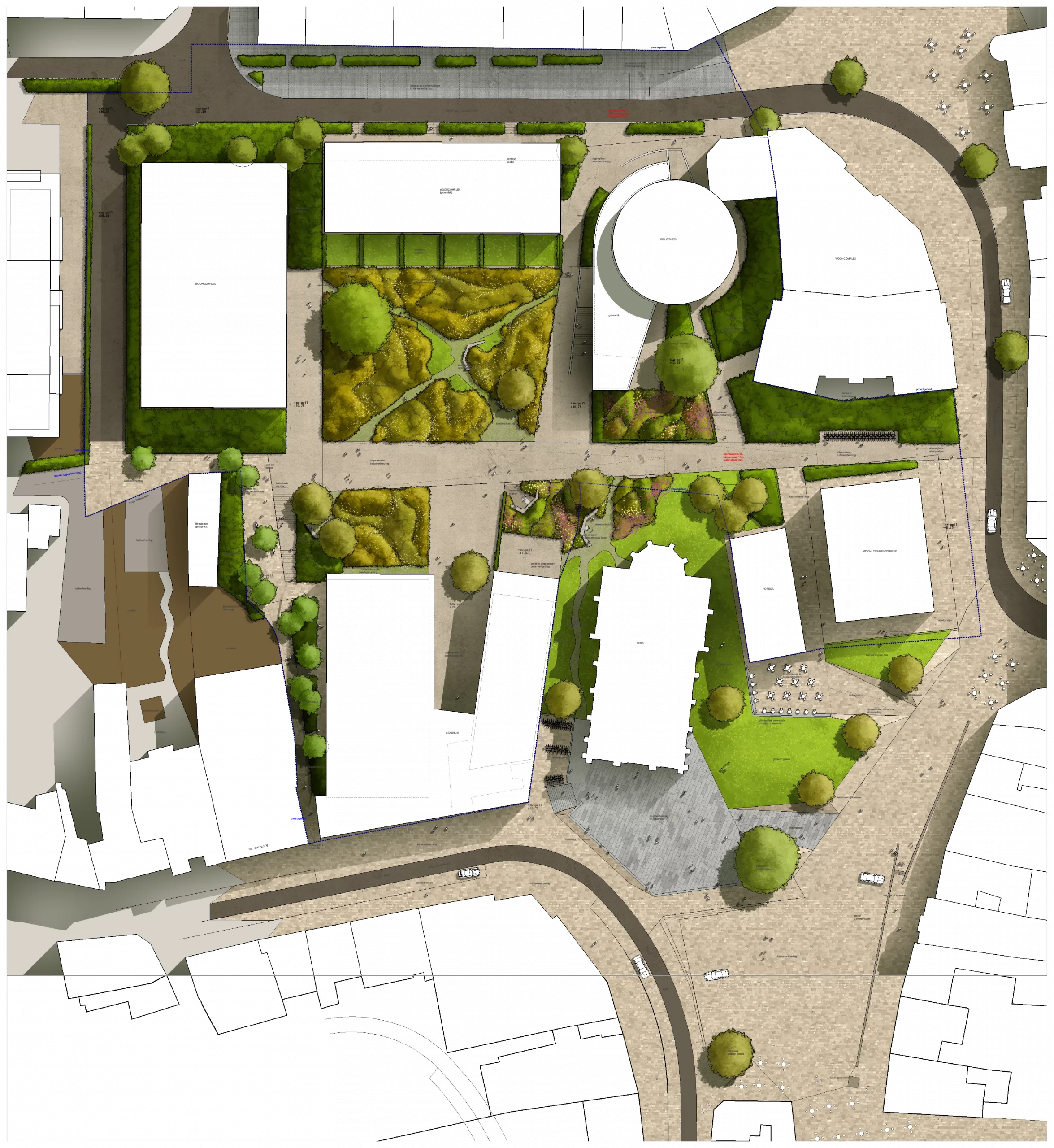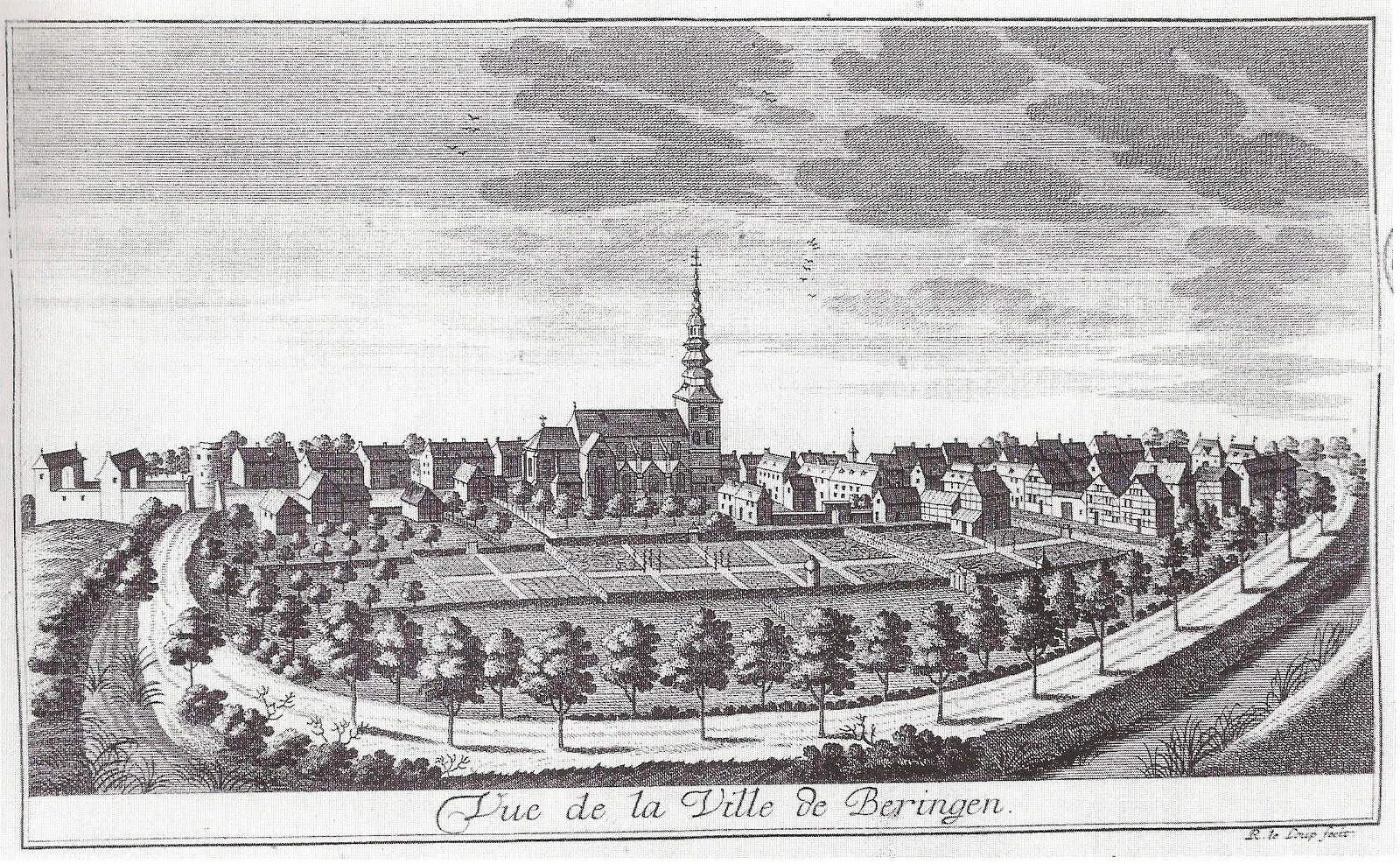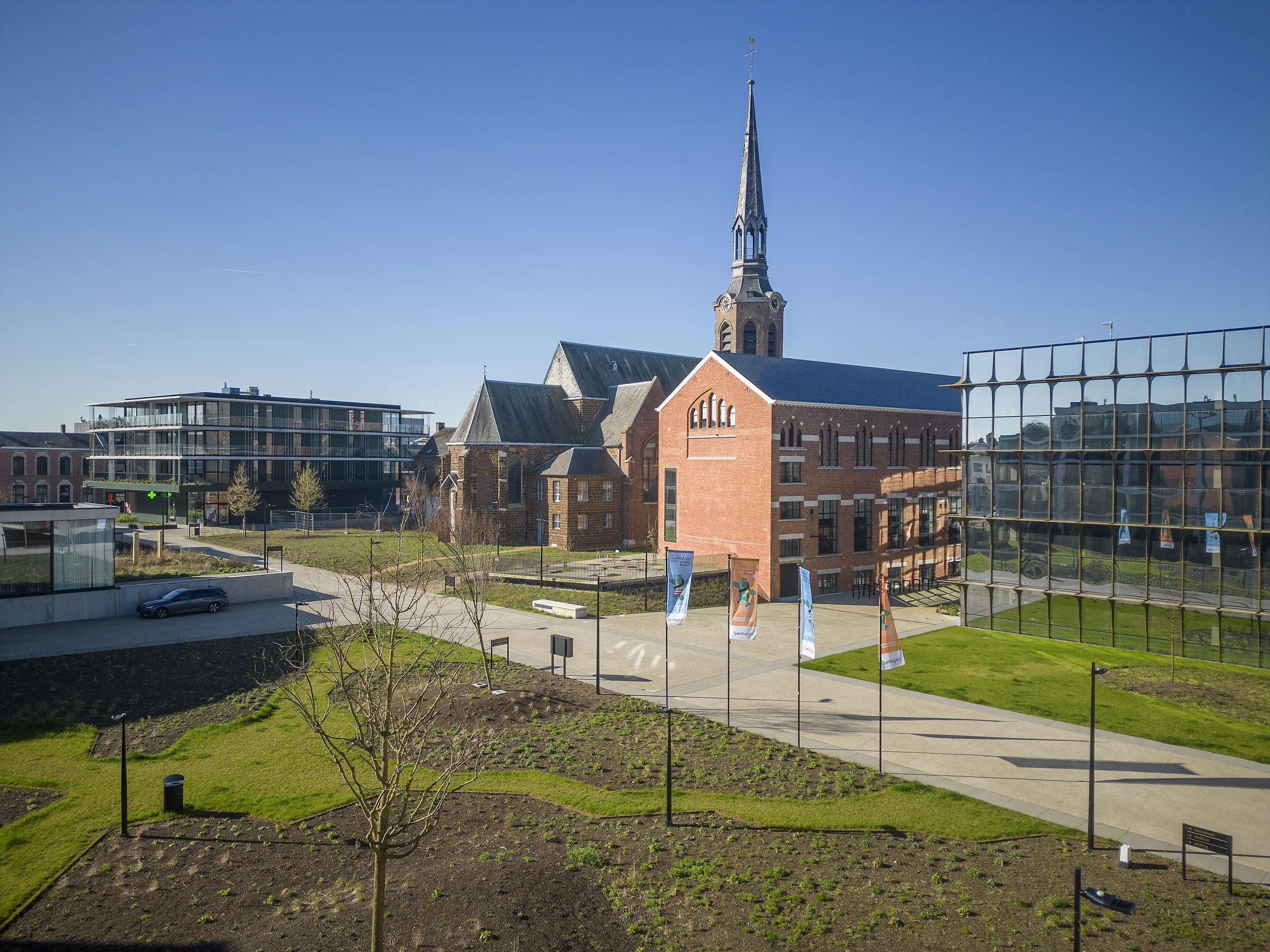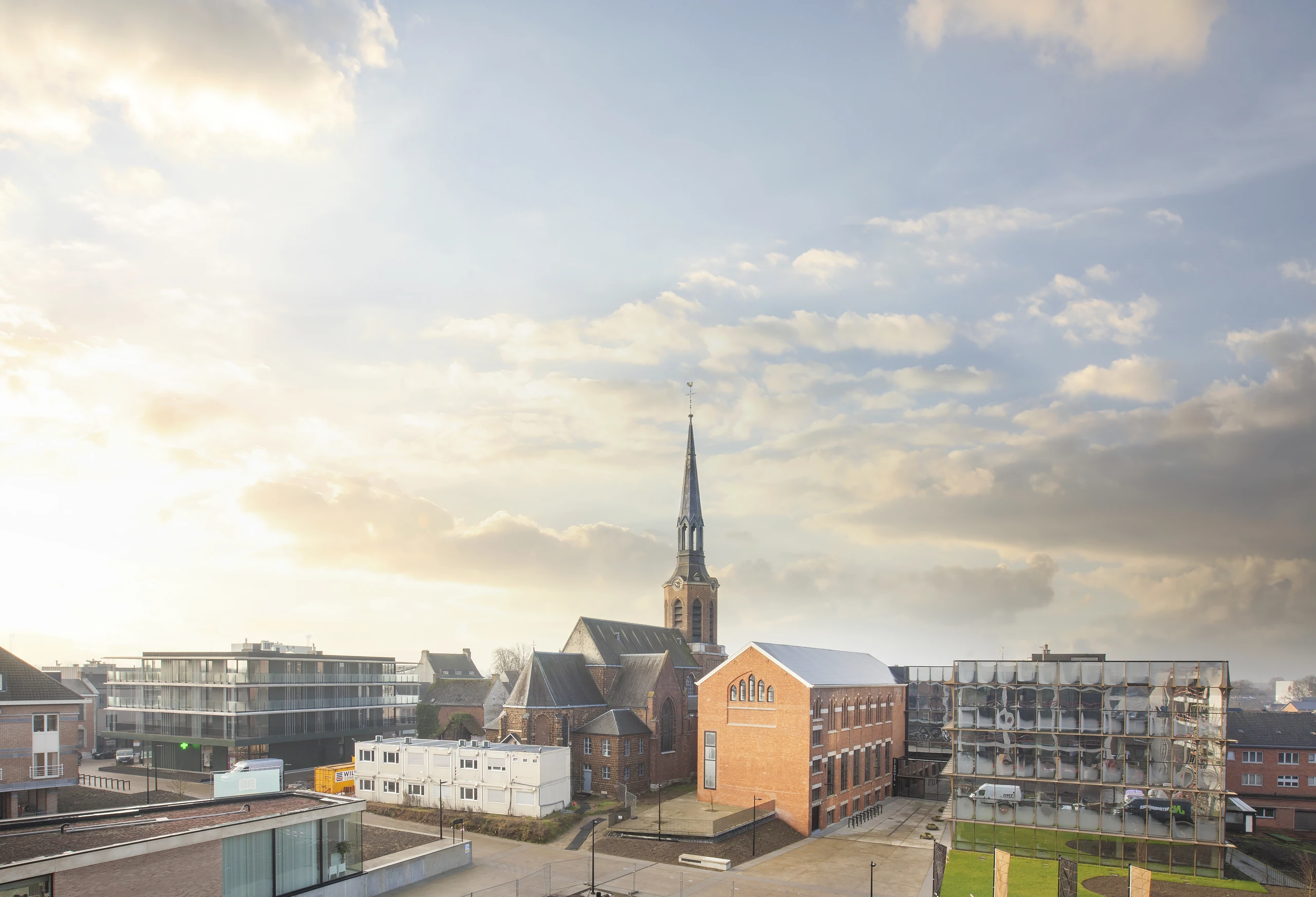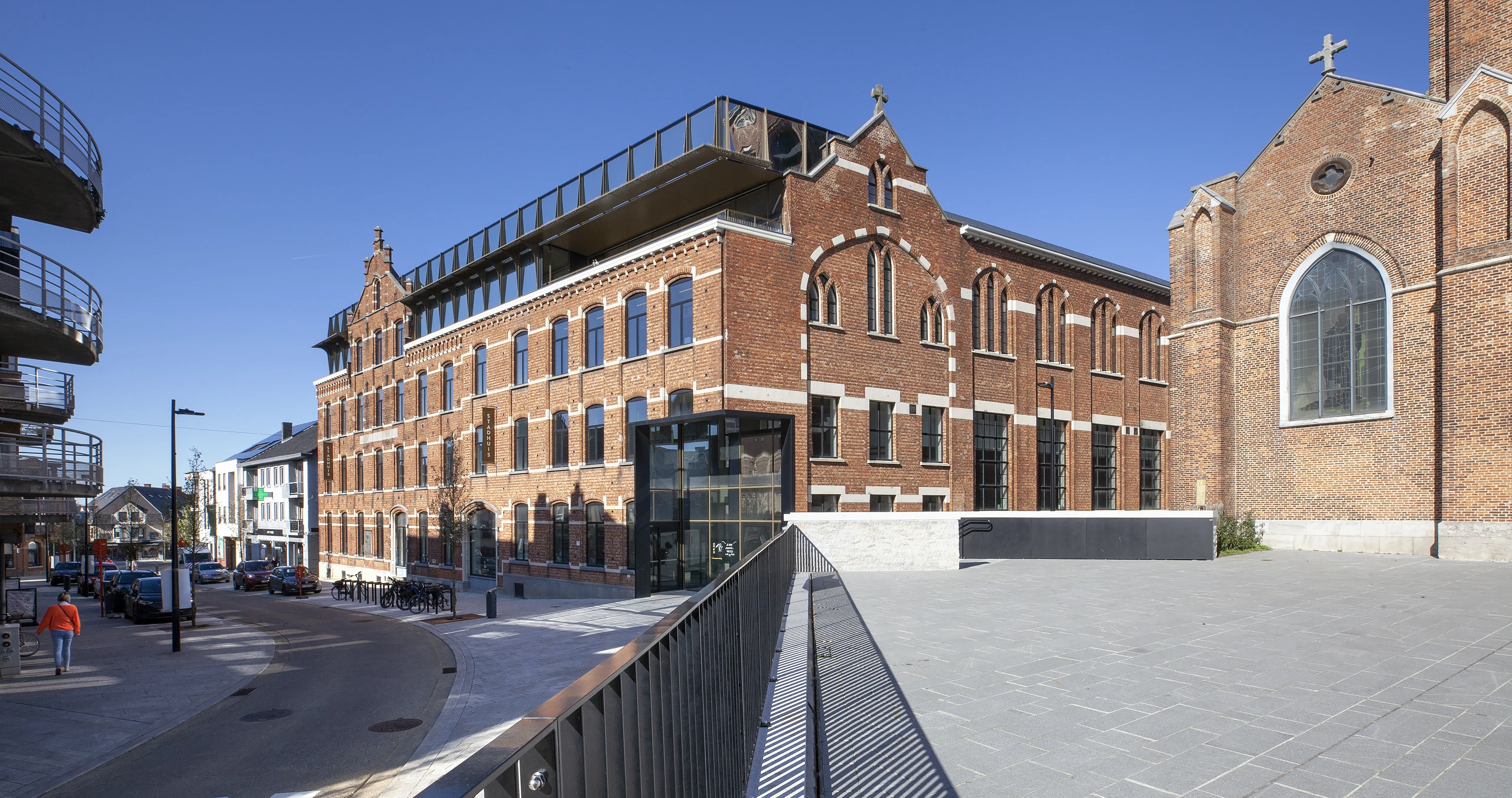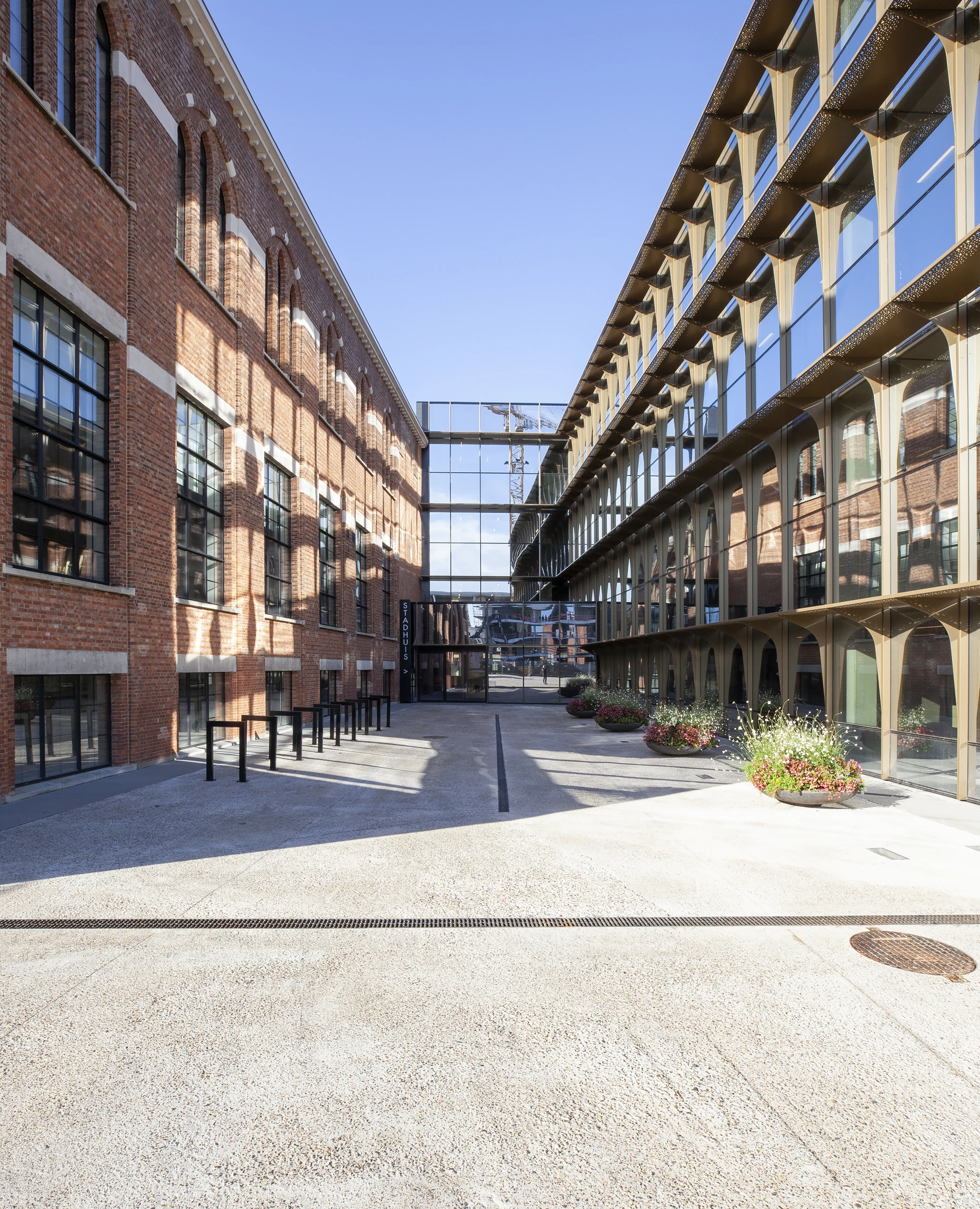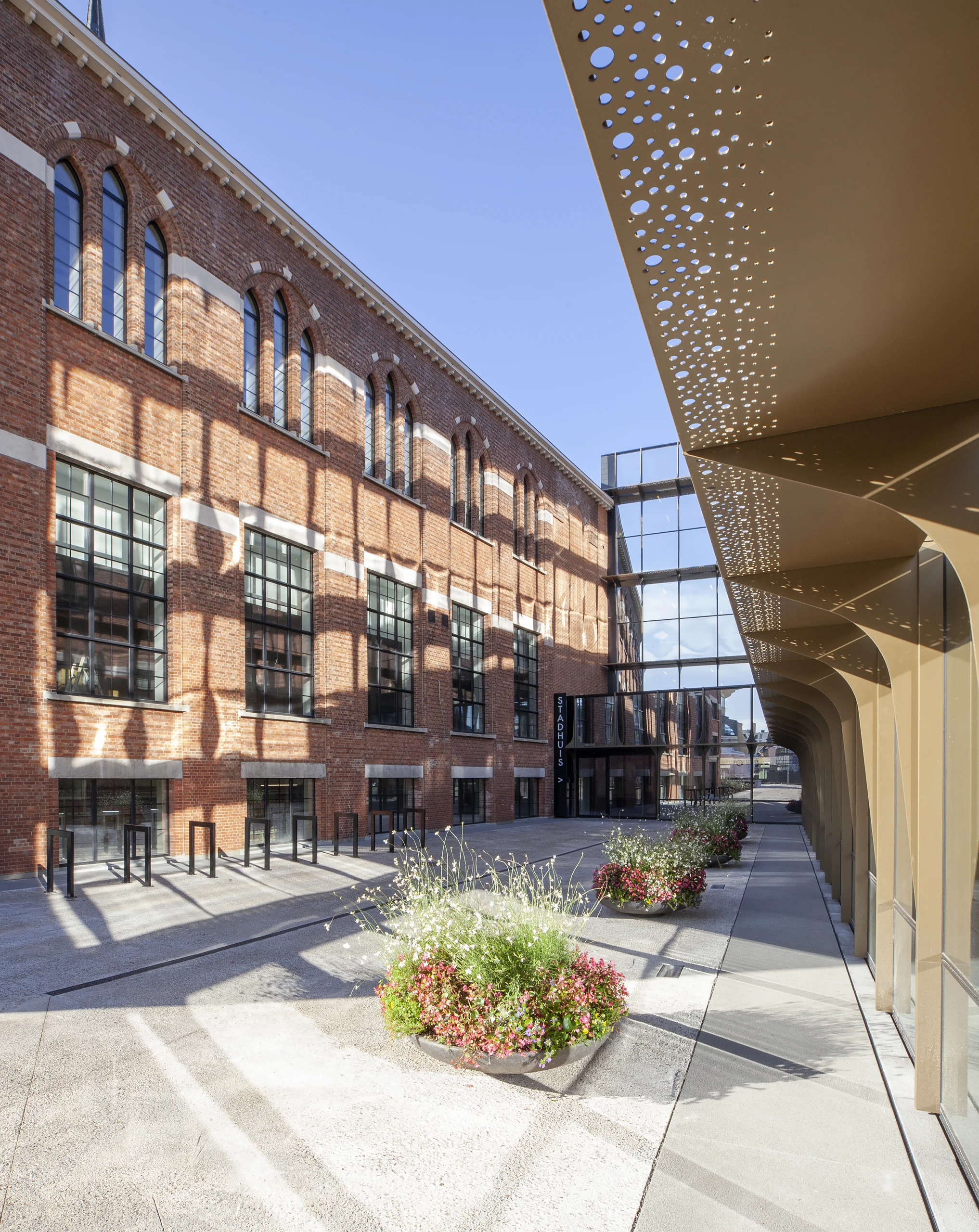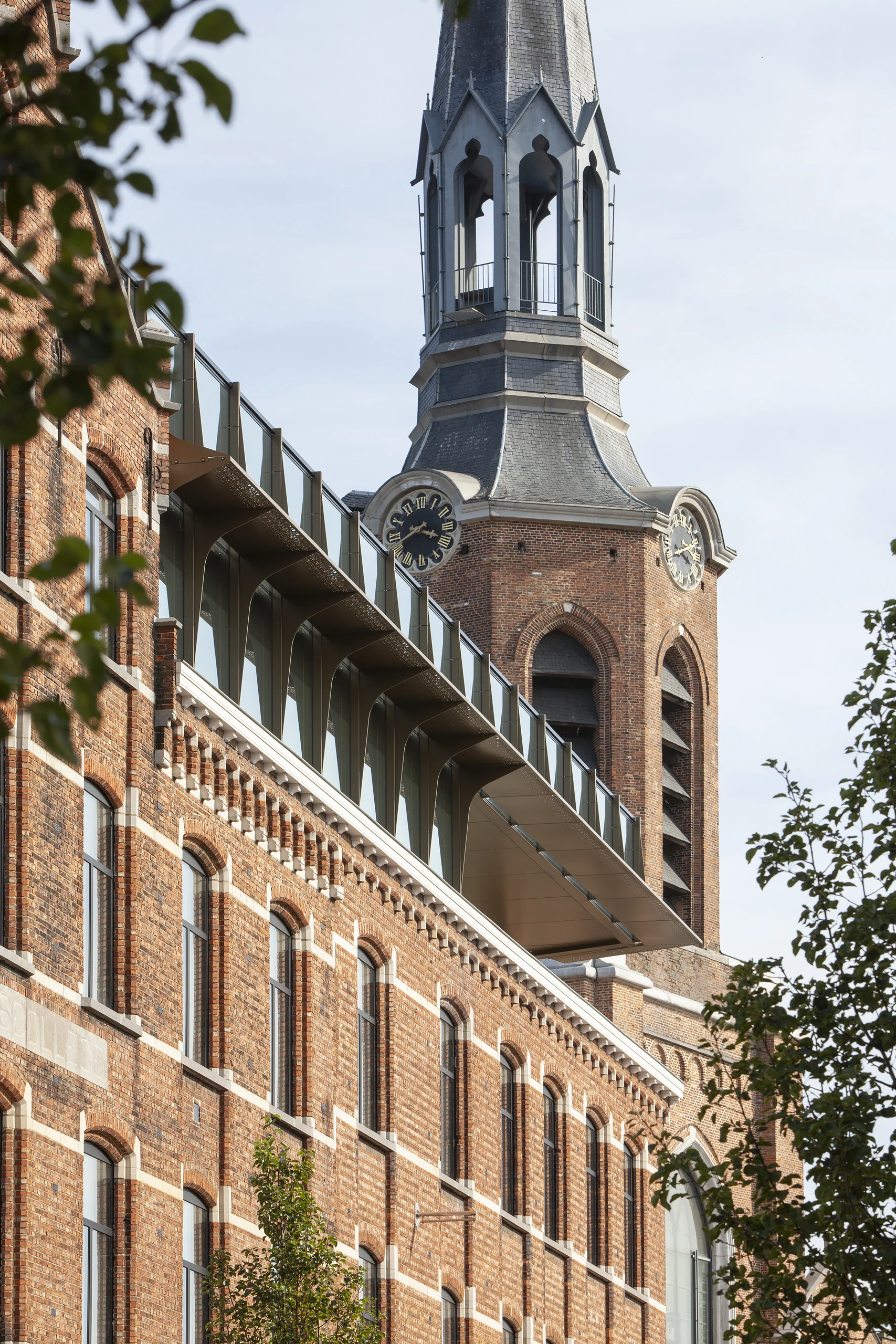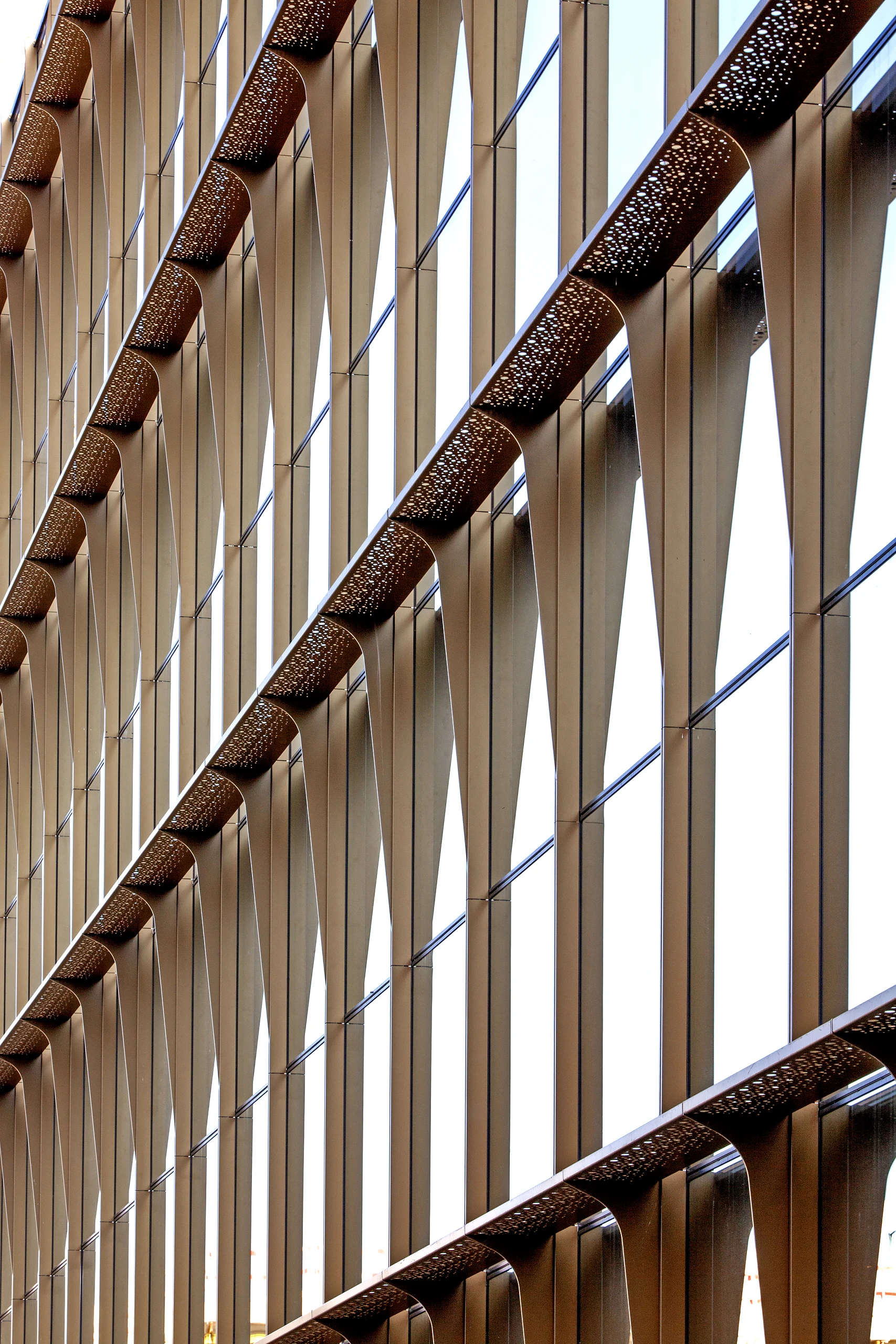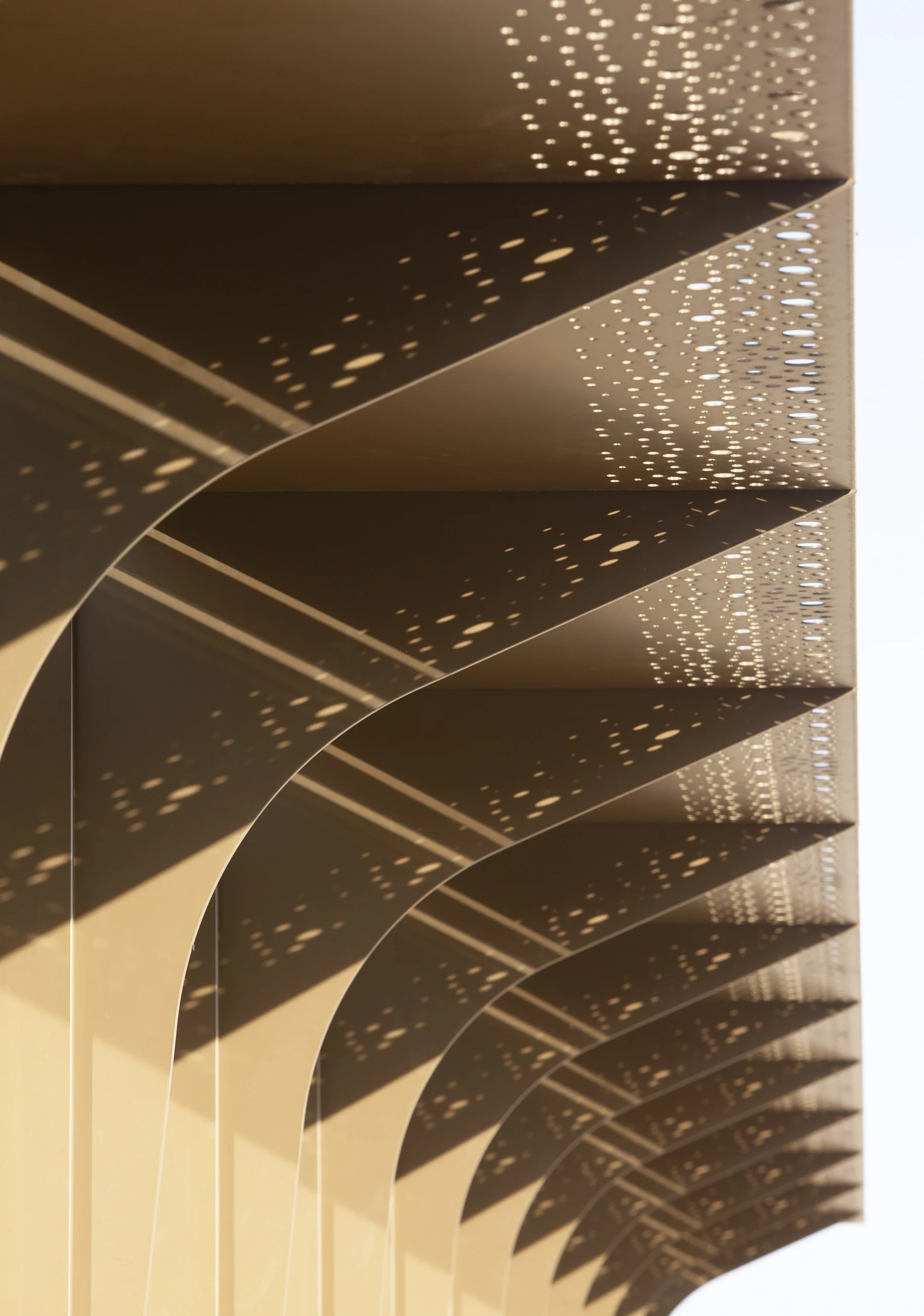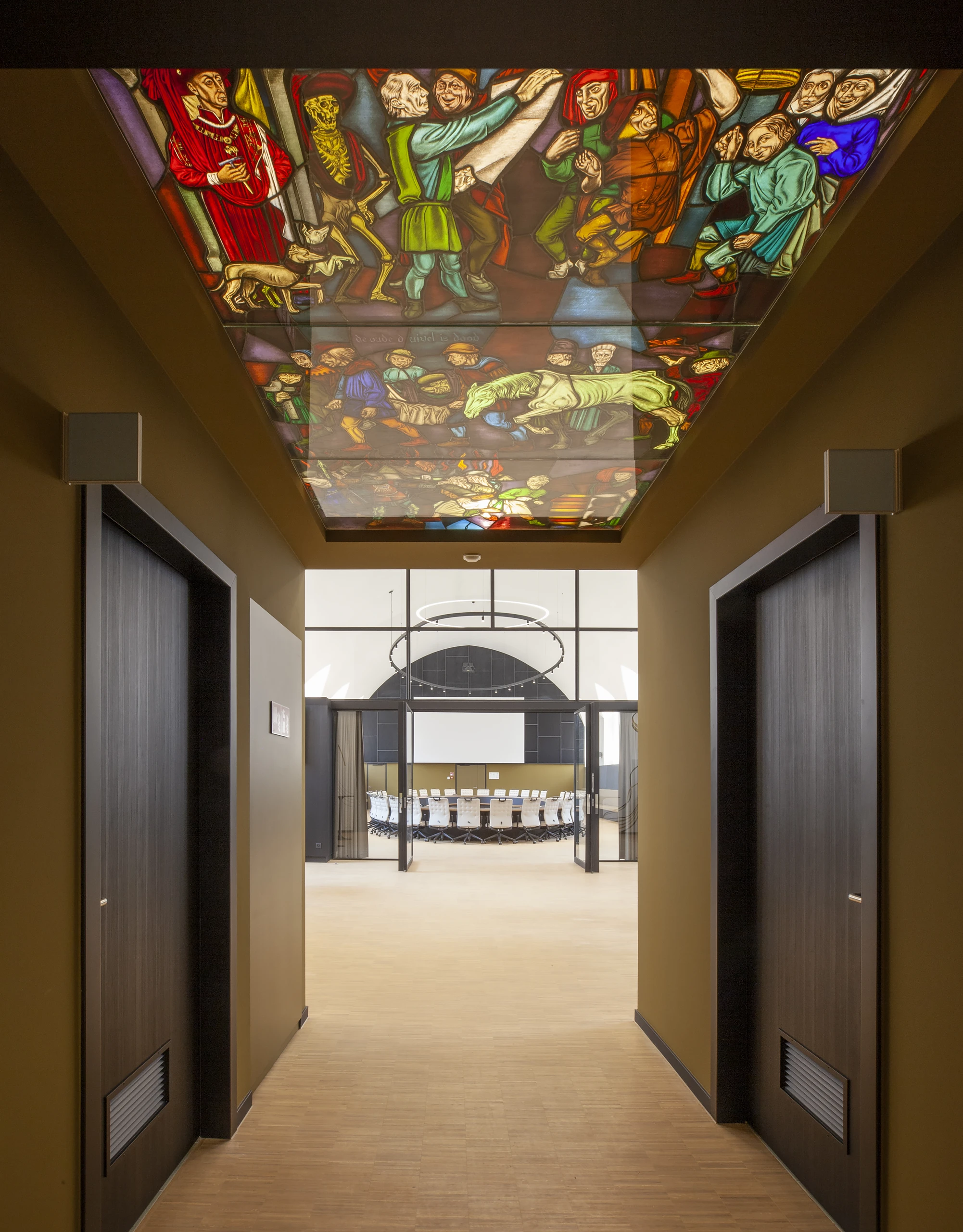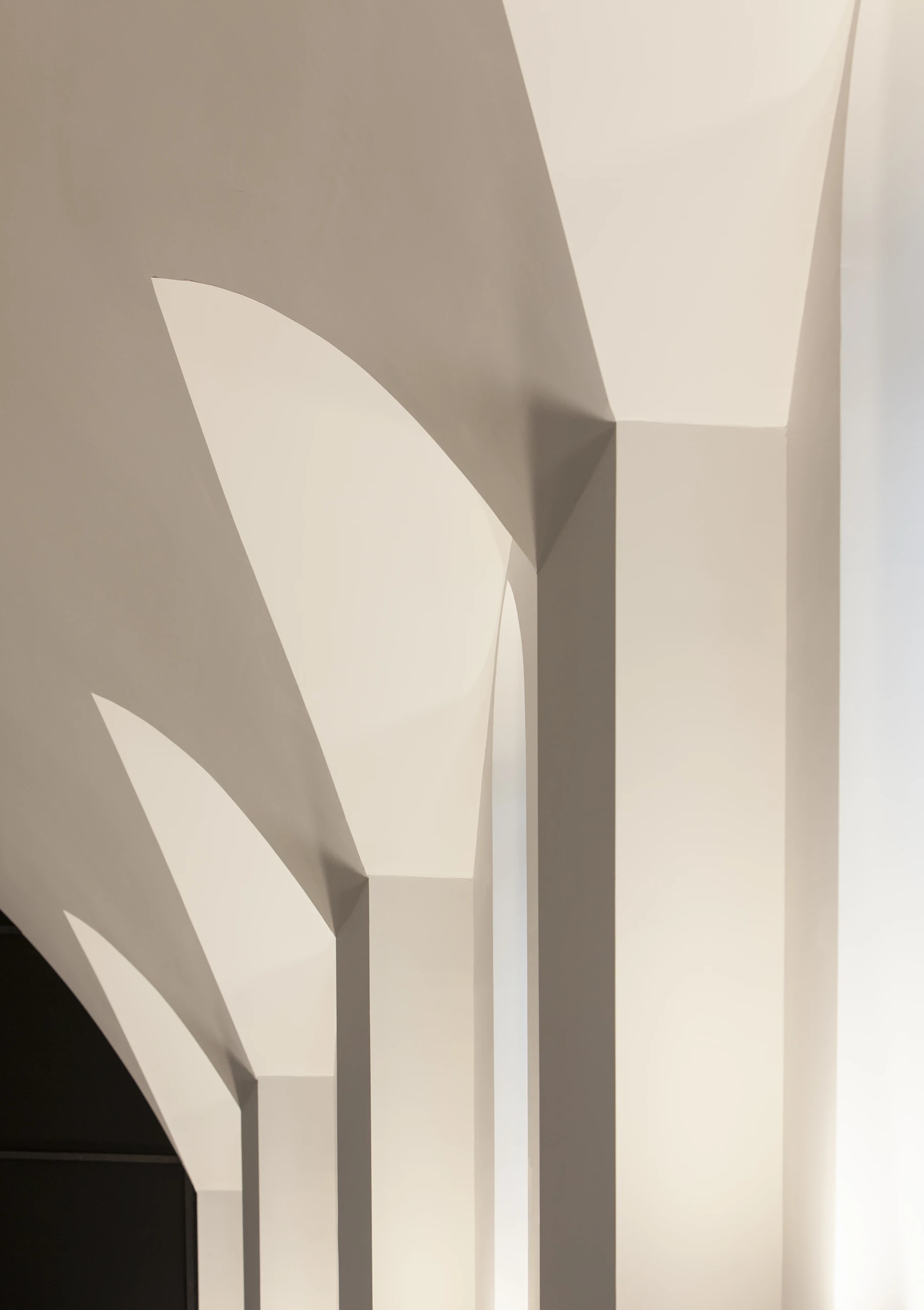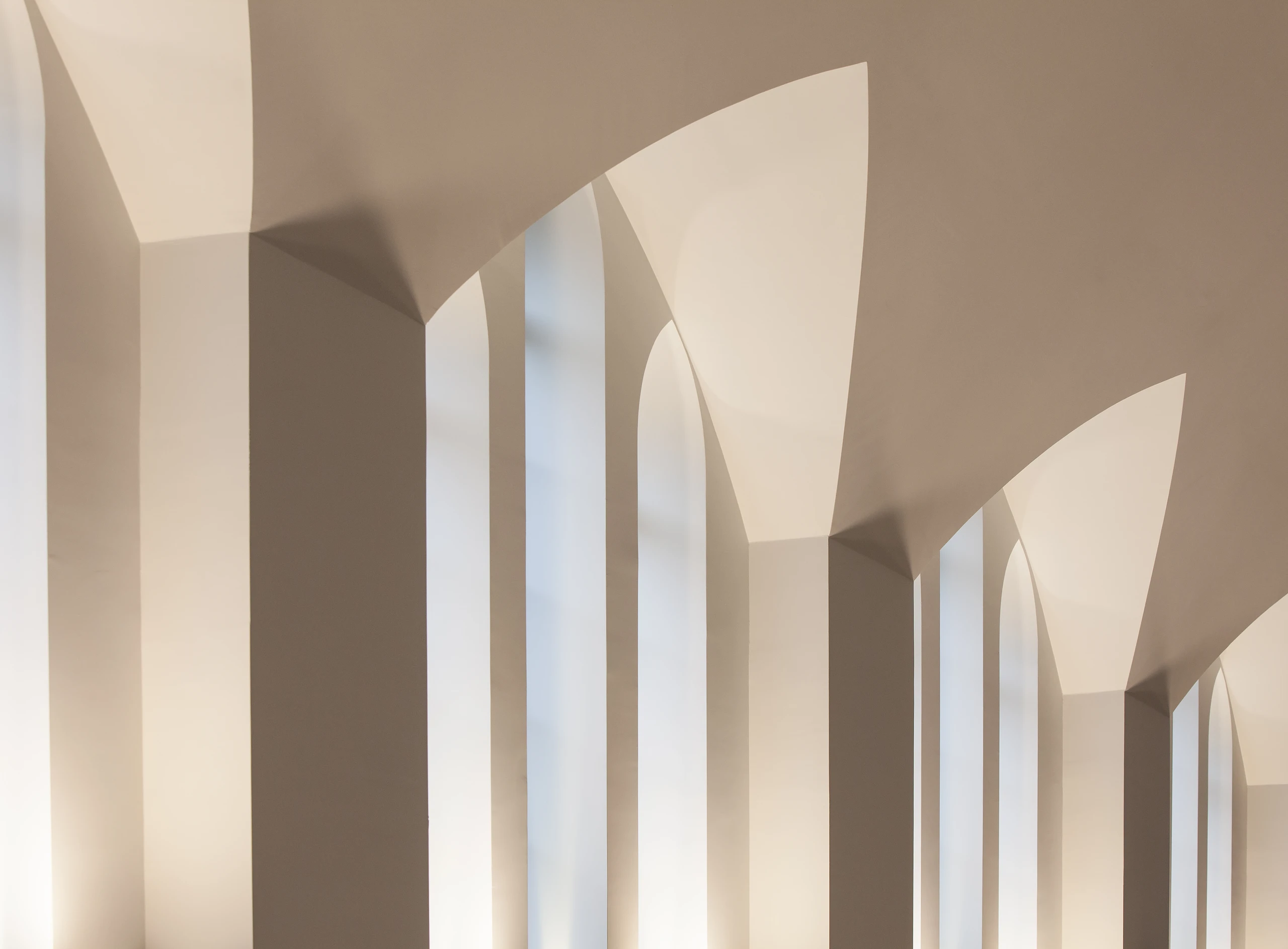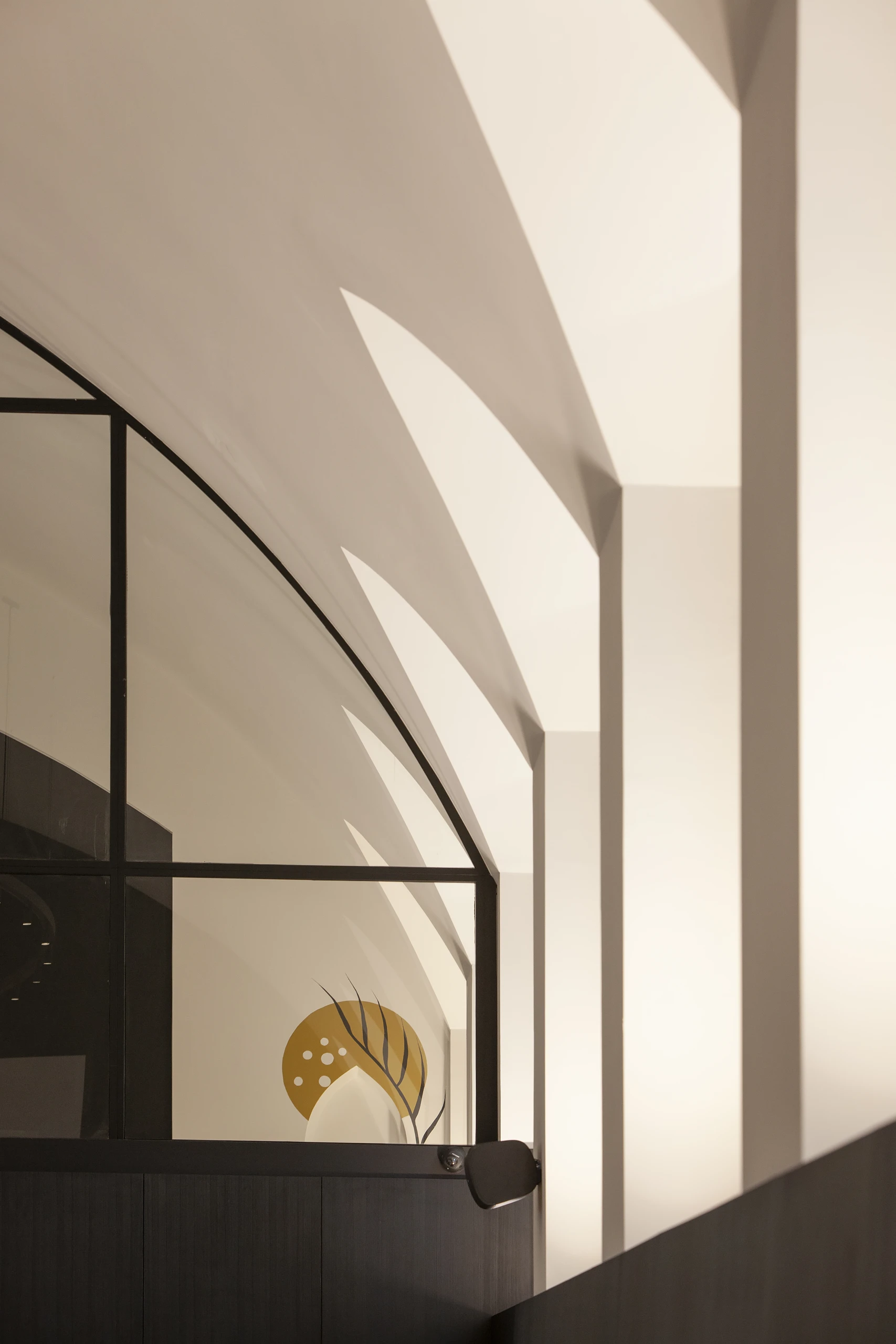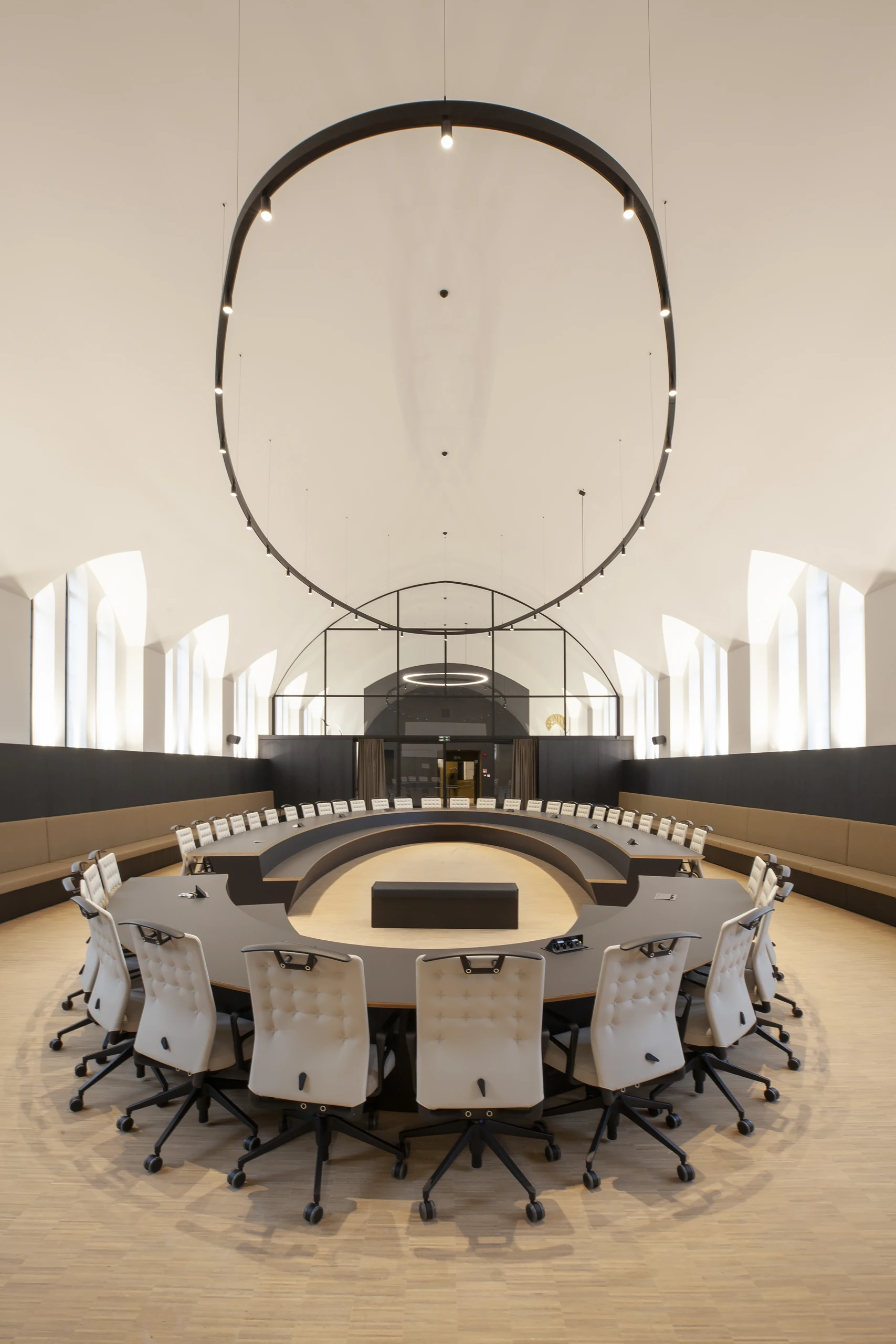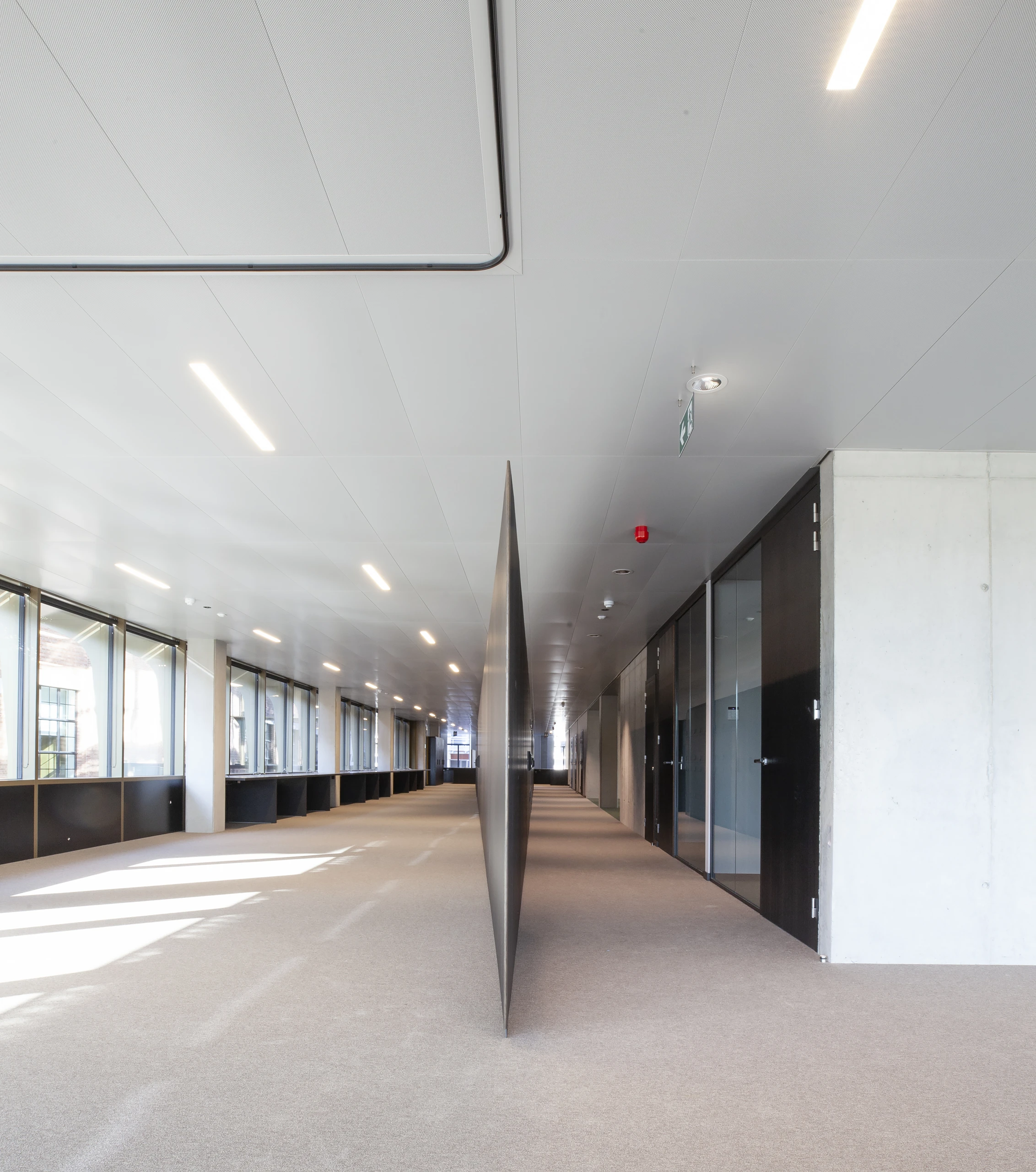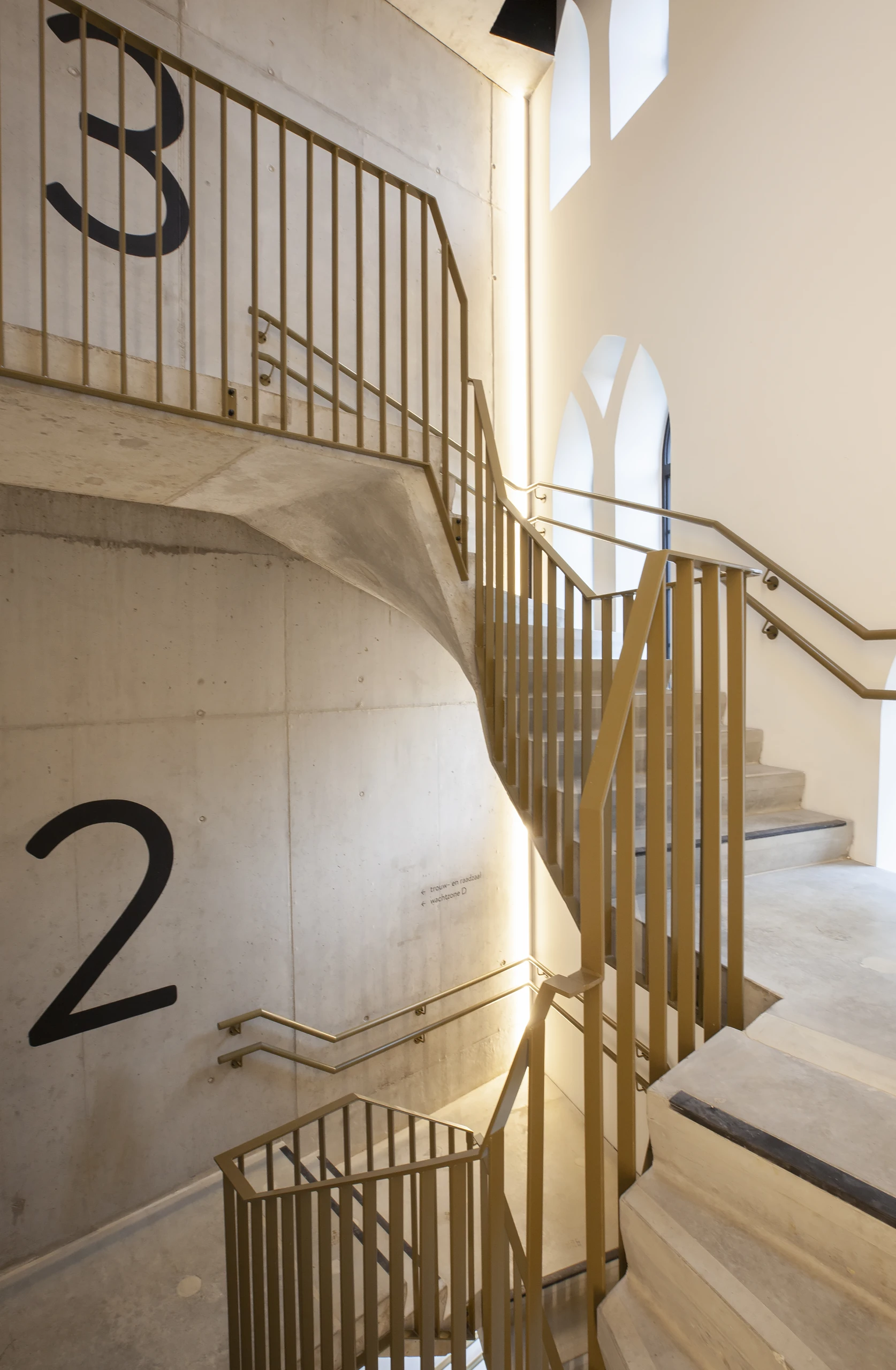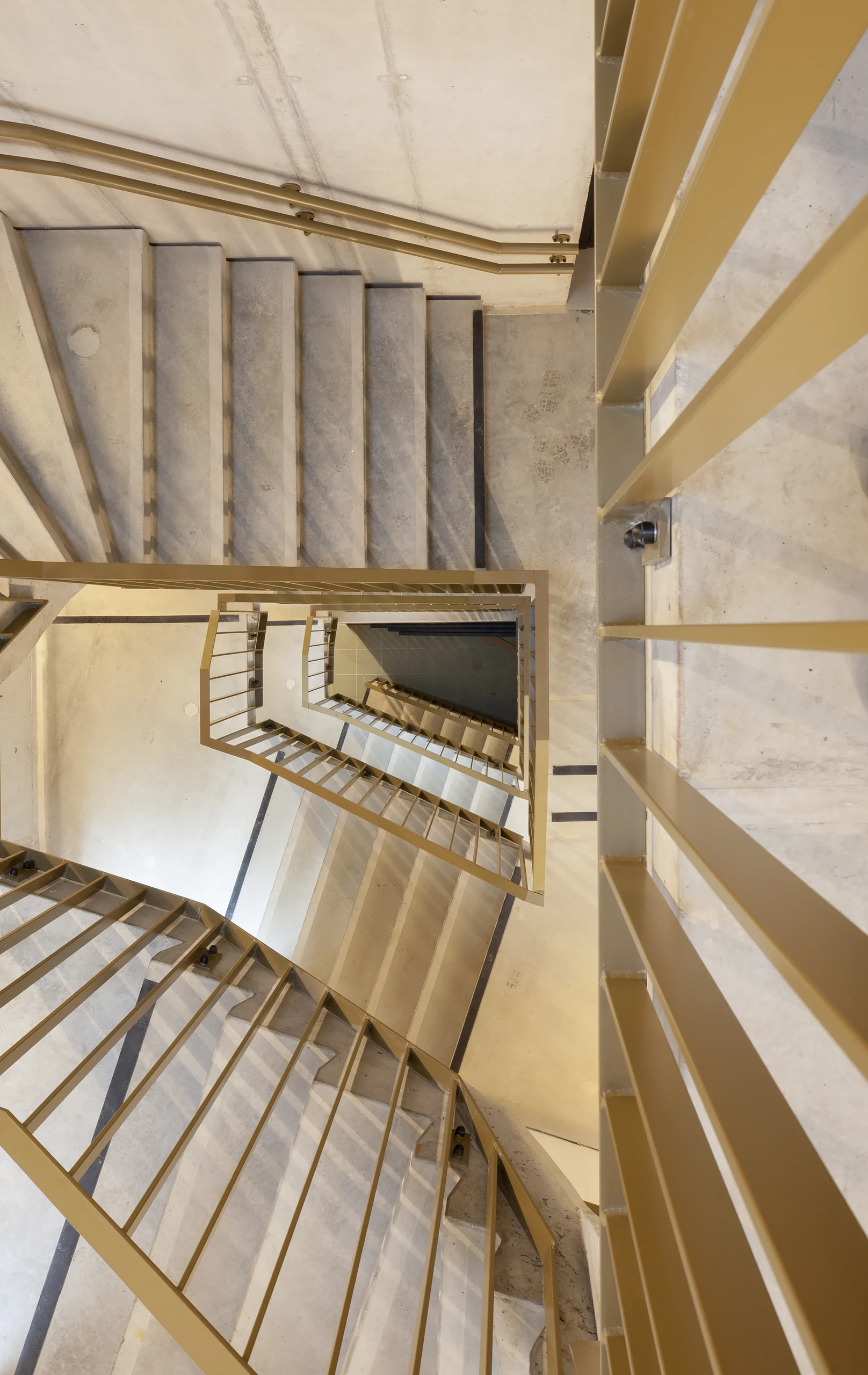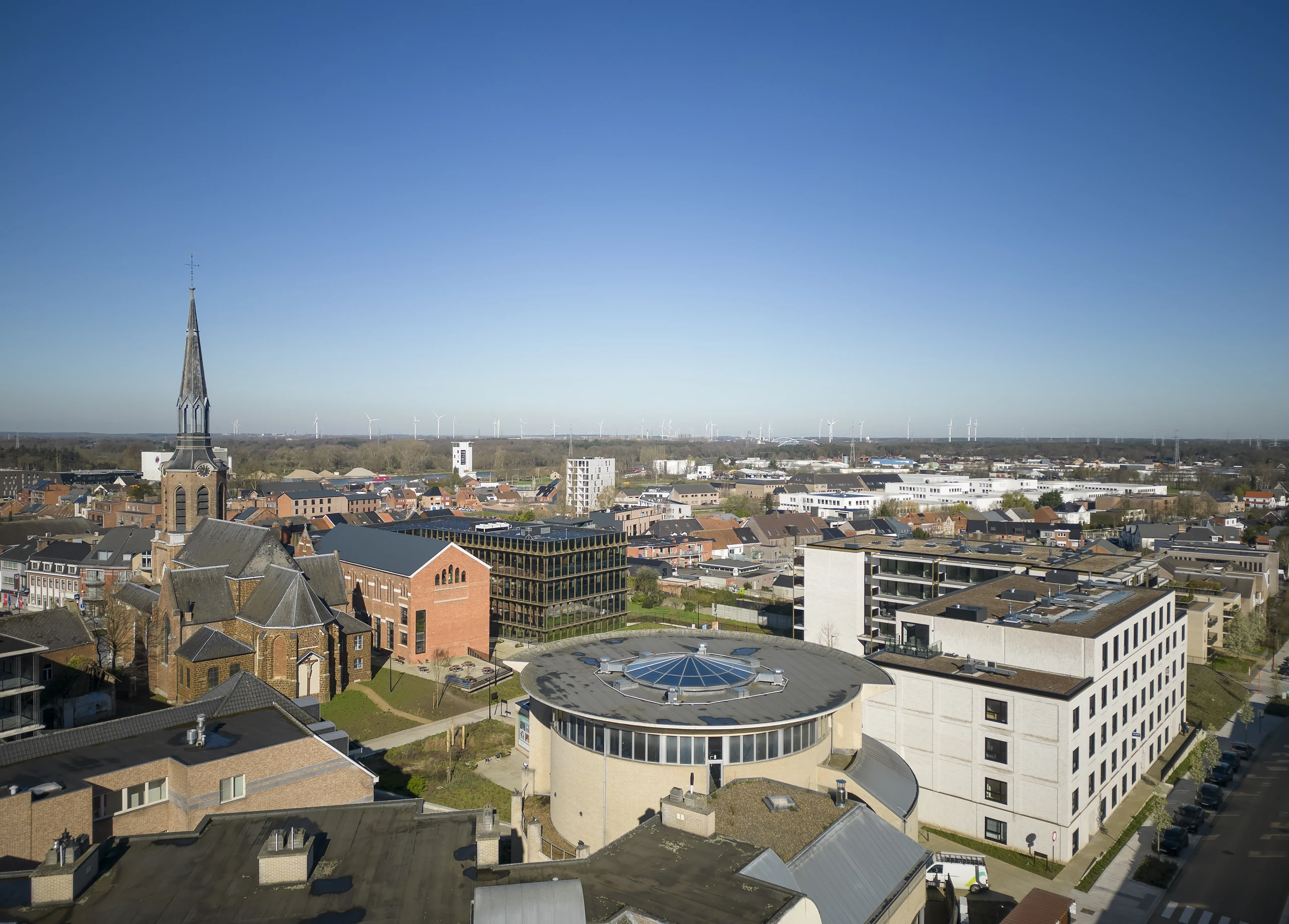- Location: Beringen, Belgium
- Program: City Hall
- Area: 7.131 m²
- Year: 2021
- Status: Realized
Beringen is evolving, aiming to enrich its city center with strategic developments that leverage its historical depth for a vibrant future. A key step is the relocation of the St. Jozef College campus, freeing up space for urban enhancement through the concentration of commerce and services. The new Town Hall, embodying customer and service excellence, will anchor this pivotal site, respecting the monumental value of Sint-Jozefscollege while integrating into the urban tapestry.
The design of the Town Hall carefully balances the old with the new, preserving the integrity of the historic façade while introducing a modern structure that reflects its surroundings through highly reflective glass, ensuring a respectful yet minimal impact on the cityscape. Designed for dual use, the Municipal Administrative Center (MAC) will serve citizens and employees alike, emphasizing logical layout, functionality, and a blend of openness and privacy.
The new five-story structure is designed for compactness and service interaction, with public zones on the ground floor for accessible service delivery and upper levels dedicated to back-office functions. The transition from old to new is marked by themed counters on each floor, connected by a central core that acts as the building’s pivot, seamlessly blending historic elements with modern efficiency and respect for the surrounding urban environment.
Project in collaboration with Jaspers-Eyers Architects and BuroLandschap (landscape architect)

